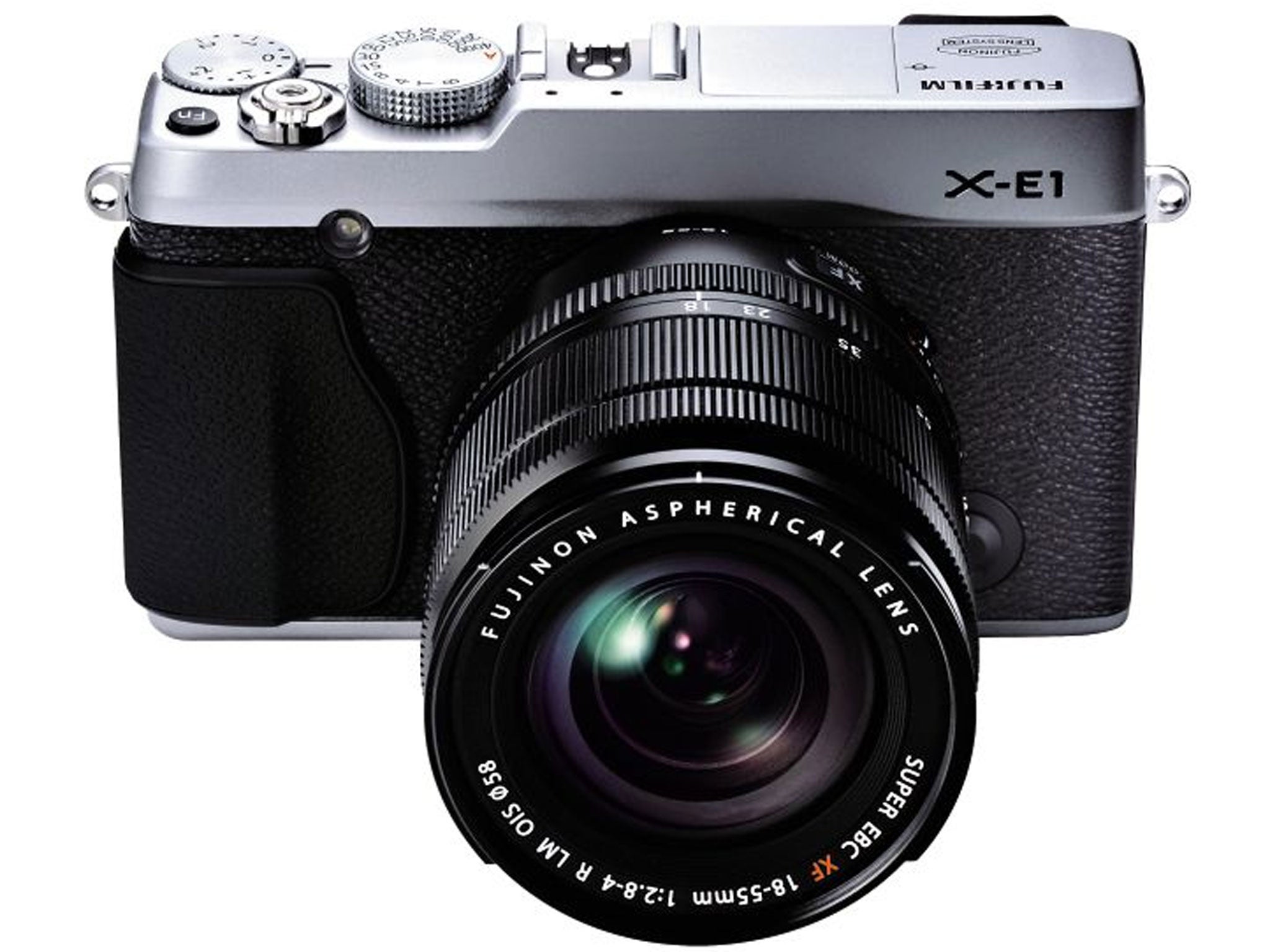A Week With: Fujifilm X-E1
Hard to handle but lovely to look at

Price: £1,049 with XF 18-55mm lens (currys.co.uk)
Sensor: 16MP X-Trans CMOS
ISO speed range: 100-25600
HD video: Full HD 1080p
What is it?
The latest in the X range of premium cameras from Fujifilm, the X-E1 is a camera designed for two particular types of snappers.
Either you're a professional snapper who wants a high-end but lightweight camera to stand in for when your SLR is too bulky, or you're a serious amateur harking back to the 1970s and Leica-inspired retro design.
Either way, the X-E1 is a serious piece of kit. It has no fully automatic mode as such, so it's only worth investing in – it doesn't come cheap – if you fully understand using the ISO, aperture, shutter speed and exposure features.
That manual operation has already made the X series popular with professional snappers looking to blend in with the crowd. Like most similar mirrorless cameras on the market (see below) the X-E1 has a really boxy, retro shape.
My test model came in bright chrome with black leatherette casing, but there's an all-black version, too. On both, the buttons are reassuringly chunky, helping to give it something of a pre-digital feel.
How does it work?
The X-E1 is a mirrorless interchangeable-lens camera (Milc) so it doesn't have a through-the-lens viewfinder like a full SLR camera, but it provides good enough imaging for most users in a much smaller package – it only weighs 350g (without a lens).
Unlike the pricier Fuji X-Pro1, the X-E1 doesn't use a hybrid optical and electronic viewfinder, instead relying on an electronic device only.
The problem with this is that there's quite considerable lag and blur, which is frustrating if you are trying to shoot fast action or busy environments.
The image quality is excellent though, thanks to a 16.3 megapixel sensor (one of the best to be found on a Milc).
Is it easy to use?
Like the styling, its control layout is rather retro too. Aperture is controlled via a dial on the lens and there's a shutter speed dial on the top plate, as well as an exposure compensation dial.
There isn't a mode dial, instead you put the camera into aperture priority by manually adjusting the aperture and leaving other settings to automatic. It's hard work (there's a steep learning curve) if you're used to a compact and the operating system isn't always intuitive, but it's very satisfying when you start to get it right.
Is it worth the money?
Despite first impressions, the X-E1 isn't a case of style over substance. On the technical front it really does do everything the serious amateur or professional snapper will require and the image quality is excellent.
It also comes with a solidly dependable 18-55mm XF lens and is compatible with Leica and most mainstream SLR lens (with the correct adapter).
Its biggest problem does stem from its stylish design, though. It's fiddly to hold and the buttons seem rather cluttered on the back mounting and on the top, but it really is very pretty, so it's probably worth all the hassle.
Follow @Jamie_MerrillJoin our commenting forum
Join thought-provoking conversations, follow other Independent readers and see their replies
Comments
Bookmark popover
Removed from bookmarks